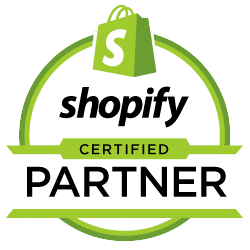Local marketing can be a game-changer for small businesses. Connecting with local customers effectively requires targeted strategies that build trust and drive engagement. But many business owners often find themselves stuck between traditional tactics and digital tools, unsure of what works and what doesn’t. That’s where this post comes in.
We’re laying out the key do’s and don’ts of modern local marketing to help you attract, engage, and retain local customers. These tips are straightforward, actionable, and peppered with real-world examples so you can start seeing results sooner rather than later.
Do Prioritize Your Google Business Profile
Your Google Business Profile (formerly Google My Business) is often the first thing customers see when they search for local businesses online. Keeping it updated and accurate is non-negotiable.
Action Steps:
- Ensure your business name, address, and phone number (NAP) are accurate and consistent across all platforms.
- Upload high-quality photos of your business, products, or services. Businesses with well-maintained profiles receive more clicks than those with bare-bones listings.
- Use keywords in your business description to help Google rank your profile for relevant searches.
Example
A family-owned coffee shop added “organic coffee beans” to their description after noticing demand for healthier options. Their profile started showing up in search results for “organic coffee near me,” leading to a 20% increase in foot traffic.
Don’t Ignore Reviews
Online reviews hold significant weight in influencing customer decisions. Ignoring them or failing to respond can hurt your local reputation.
What to Avoid:
- Never leave negative reviews unanswered. It sends a message that you don’t care about customer feedback.
- Don’t try to game the system by buying fake reviews. If caught, it can result in penalties that damage trust and visibility.
What to Do Instead:
- Respond to reviews (both positive and negative) professionally and promptly. When handled well, even negative feedback can turn into a positive experience.
- Encourage happy customers to leave reviews by simply asking or including reminders in email receipts.
Example
A hair salon turned around a bad review by offering the unhappy customer a free do-over. The customer updated their review to five stars and shared their positive story, which helped the salon maintain trust within the community.
Do Use Hyperlocal Content Marketing
Local customers love businesses that understand their community. By creating content tailored to your area, you can build a stronger emotional connection with potential customers.
Ideas to Get Started:
- Write blogs or social posts about events happening in your town or neighborhood.
- Share stories about how your business contributes to the local community.
- Create location-specific guides, like “Best Spots for Lunch in Downtown Phoenix” or “5 Hiking Trails Every Austin Local Should Explore.”
Example
An athletic shoe store created a printable map of local running trails and made it available on their website. Not only did it boost local search engine rankings, but it also brought in runners who discovered the store through the map.
Don’t Neglect Mobile Users
Local searches often happen on mobile devices. A clunky website or outdated online presence can drive potential customers away.
Common Mistakes:
- Websites that aren’t mobile-friendly.
- Slow loading pages, especially on smartphones.
- Hard-to-navigate menus or outdated contact information.
The Fix:
- Opt for a responsive design that adjusts to mobile screens seamlessly.
- Test your website’s speed and optimize it. Tools like Google’s PageSpeed Insights can help.
- Ensure your phone number is clickable on mobile devices to make contacting you easy.
Example
A local bakery updated their website to include click-to-call functionality and simplified their mobile navigation. The change correlated with a 15% increase in calls from customers placing cake orders.
Do Partner with Complementary Local Businesses
Collaboration can open doors to new customer bases without breaking the bank. By teaming up with other businesses, you can share audiences while supporting each other.
Collaboration Ideas:
- Host joint events with complementary businesses. For example, a yoga studio might partner with a juice bar for wellness days.
- Cross-promote products or services online or in-store.
- Share each other’s content on social media.
Example
A hardware store partnered with a landscaping company for a local gardening expo. The event attracted a crowd, and both businesses gained new customers who hadn’t interacted with them before.
Don’t Overlook Social Media’s Local Capabilities
Social media isn’t just about posting pretty pictures. It can help you target specific groups in your area in highly effective ways, if you know how to use it.
Avoid These Pitfalls:
- Posting without a strategy.
- Focusing only on national, generic topics.
Make It Work for You:
- Use local hashtags to increase discoverability. For instance, if you’re a New York-based bakery, hashtags like #NYCBakery or #UpperEastSideEats can attract nearby users.
- Run geo-targeted ads to promote offers and events to people in your area.
Example
A gym in Miami used Facebook’s location targeting feature to advertise a summer weight-loss challenge to nearby residents. The ad campaign resulted in 50 new memberships within two weeks.
Do Track and Measure Results
Success in local marketing doesn’t come from guesswork. You need data to see what’s working and where to adjust your efforts.
Ways to Measure:
- Track traffic and engagement using tools like Google Analytics for your website or insights from your social media platforms.
- Use call tracking to identify marketing campaigns that drive inquiries.
- Monitor conversion rates for local offers and promotions.
Example
A garden supply store placed a unique coupon code in their emails and tracked redemptions in-store. They discovered their email list drove more foot traffic than social media, enabling them to shift budgets accordingly.
Final Thoughts
Modern local marketing offers incredible opportunities for small businesses to connect with their communities. By avoiding common pitfalls and focusing on proven strategies, you can build a stronger local presence and drive more business through your doors. Start by updating your Google Business Profile, engaging with reviews, creating hyperlocal content, and keeping mobile users in mind. Measure what works, keep learning, and always listen to your local audience. Small, consistent steps can make a big difference.
We Want To Talk To You About Your Marketing Goals.
Let’s Supercharge Your Online Growth!












